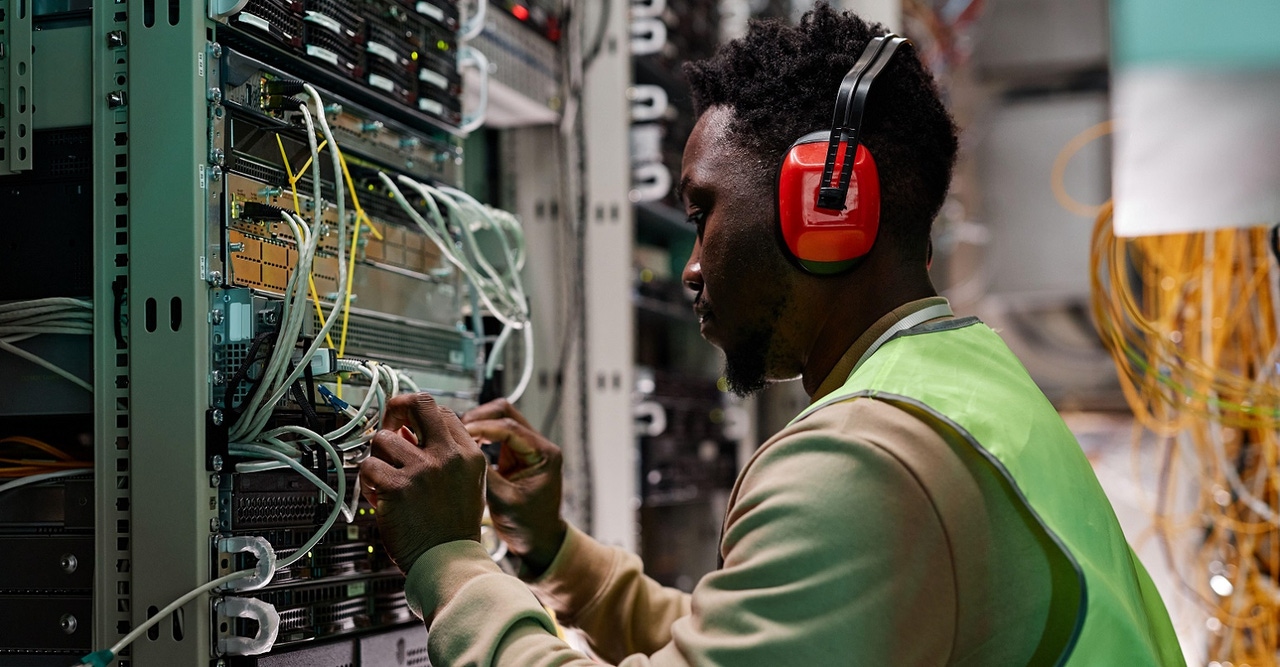How to Reduce Server Noise Inside Your Data CenterHow to Reduce Server Noise Inside Your Data Center
Server noise is an issue in many data centers. Here are actionable steps data center operators can take to keep their servers quiet.

If you're a data center operator, you probably prioritize the reliability, energy-efficiency, and optimal layout of your servers on the data center floor. But here's another consideration related to servers that you may be overlooking: data center noise emissions.
Indeed, although the noise generated by servers may not seem like a major concern, it can be, especially in facilities where employees work in close proximity to server racks.
Let's look at why server noise can be a problem in data centers, as well as the steps data center operators can take to keep servers quiet.
What Makes Servers Noisy?
The noise level of a server and server room can vary widely depending on a variety of factors:
Which type of cooling equipment it relies on: Servers that are cooled by multiple fans, for example, will typically emit more noise than those that use liquid cooling.
Server density: The more servers you cram into a small space, the louder it will be.
Server rack design: Racks that are insulated and/or constructed with thick material that dampens noise will typically result in quieter server rooms.
Ancillary equipment: Network switches, HVAC systems, and other equipment that is installed alongside servers can contribute to the overall noise level of a server room.
Because of these variables, it would be wrong to conclude that server rooms are always loud. However, on the whole, they tend to be. According to research from Sensear (which sells noise reduction equipment), the average noise levels inside a data center server room are 92 dB(A) — which is slightly quieter than a subway train and slightly exceeds the noise level that OSHA considers safe for workers subject to long-term exposure.
Is Server Room Noise a Problem?
Now, if your data center is largely automated and few humans work in close proximity to your servers, a loud server room is probably not an issue, and you have little reason to invest in measures for keeping your servers quieter.
But humans are a common presence in many server rooms. Data centers where servers are frequently updated or require regular maintenance tend to have more technicians working inside server rooms for extended periods. In addition, in some cases server rooms are located in facilities that also house office space, exposing workers in nearby offices to prolonged noise from servers.
In situations like these, finding ways to reduce server noise makes sense. It will improve the experience of employees while also helping to ensure compliance with workplace regulations that require employers to maintain reasonable noise levels.
Strategies for Reducing Data Center Noise
Keeping servers quieter is not all that difficult or expensive in most cases. Here's a look at actionable steps data center operators can take to tame server room noise.
Swap out fans
The fans that manufacturers install on servers may not be the quietest ones available. Replacing them with quieter fans is a relatively cheap and simple way to cut down on server noise.
Adjust fan settings
Servers may also be configured by default to run fans at levels that are higher than necessary. Ideally, fans should be configured so that speed increases only when the heat output of the server increases. That way, you don't have fans producing noise when it's not necessary.
Some server manufacturers provide utilities to control fan settings. Third-party fan control software is also available that works with most hardware.
Update heat sinks
Swapping out less efficient heat sinks (which transfer excess heat from server components like CPUs) can also reduce noise levels. The more efficient your heat sinks, the less work your fans or other cooling systems will have to do.
Replace fans with quieter cooling systems
Where feasible, replacing fan-based cooling with liquid cooling systems is a highly effective way to reduce server noise. The downside here is that liquid cooling is more expensive, so this approach probably only makes financial sense if quieter servers are a top priority.
Soundproof server racks
Adding insulation and air sealants to server racks is another relatively inexpensive and easy way to cut back on noise. It also offers the benefit of improving cooling system efficiency by helping to prevent chilled air that you pump into server racks from leaking out before it has cooled your equipment.
Soundproof server room walls
If your main priority is to reduce the sound that leaks from the server room to neighboring spaces (as opposed to making the server room itself quieter), installing soundproofing materials inside or on the face of server room walls can reduce noise transfer.
In addition, installing materials that absorb sound on server room walls can reduce the echo effect of noise emitted from servers, leading to lower noise levels inside the server room itself.
Conclusion: Quieter Servers Mean Better Data Centers
Reducing noise emissions from servers may not be the No. 1 priority for most data center operators. But once you've optimized other aspects of your operations, such as energy consumption, investing in server noise reduction — which, again, is not particularly hard or expensive in most cases — is an effective way to improve the quality of life of employees. As a bonus, many of the steps that cut back on server noise offer the added benefit of boosting server efficiency.
About the Author
You May Also Like









